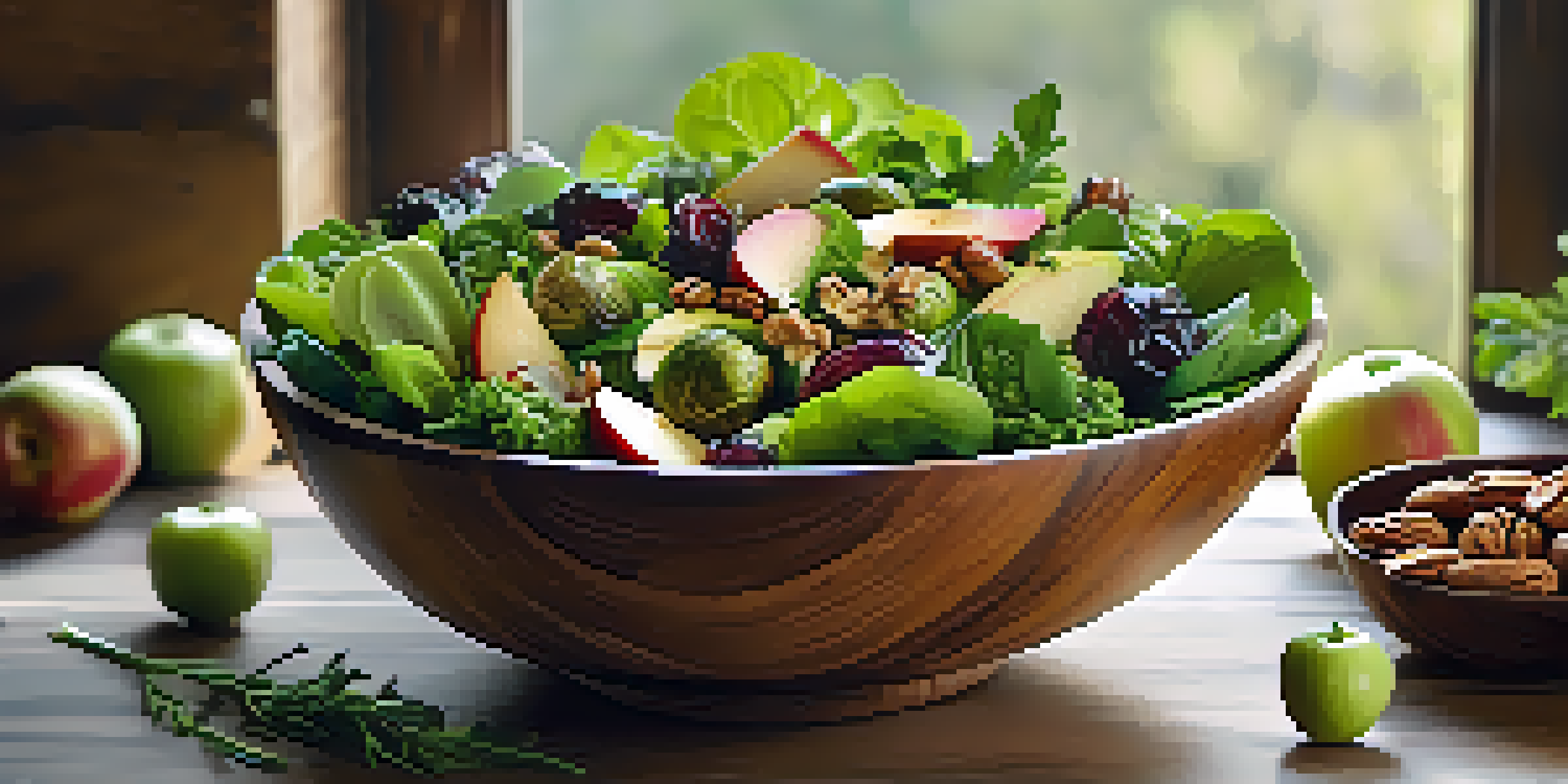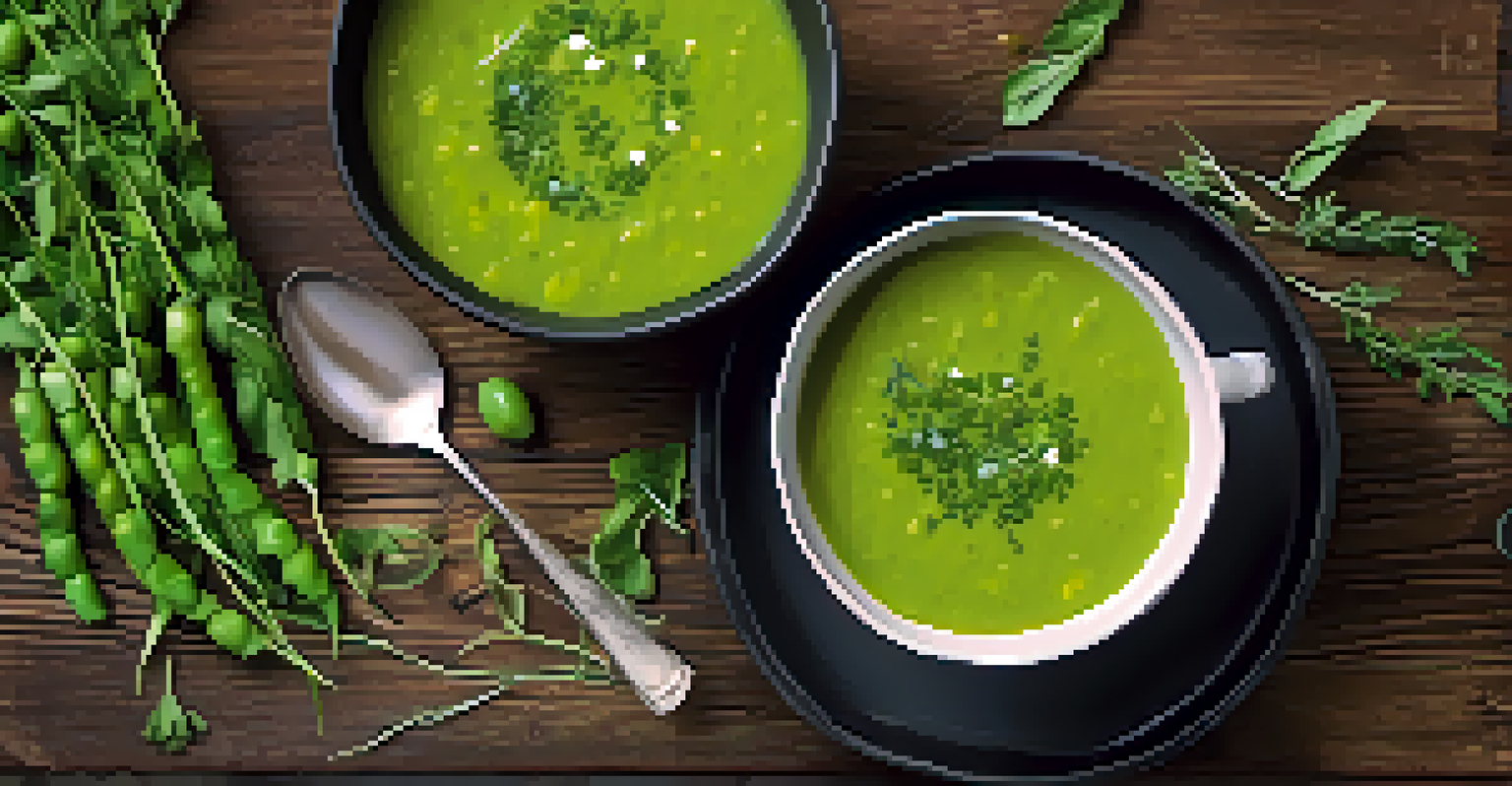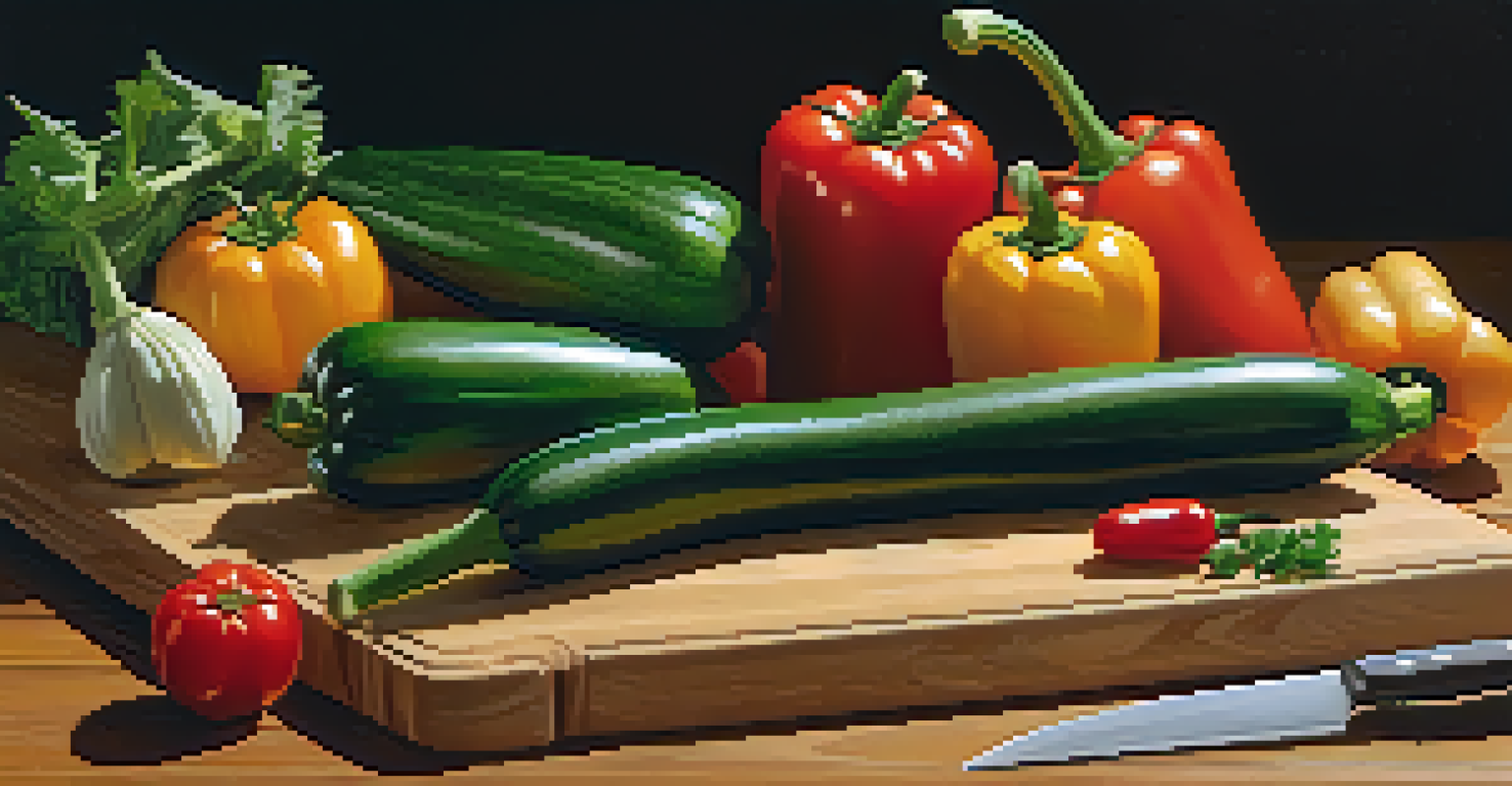Creating Flavorful Seasonal Vegetarian Dishes at Home

Understanding the Benefits of Seasonal Ingredients
Using seasonal ingredients not only enhances flavor but also supports local farmers and reduces carbon footprints. When you eat foods that are in season, they’re often fresher, tastier, and more nutritious. For example, in the fall, root vegetables like carrots and sweet potatoes are at their peak, providing a hearty base for many dishes.
Eating seasonal food is not only better for your health, but it also helps the environment. You are reducing your carbon footprint and supporting local farmers.
Moreover, seasonal produce is usually more affordable since it’s abundant. This means you can enjoy vibrant, flavorful meals without breaking the bank. Just think of how much better a ripe tomato tastes in summer compared to those imported ones in winter!
By choosing seasonal ingredients, you can also inspire your cooking creativity. Each season brings different flavors and colors to your plate, encouraging you to experiment with new recipes and combinations. It’s a delightful adventure for your taste buds!
Essential Tools for Seasonal Cooking
Having the right kitchen tools can make creating seasonal dishes a breeze. A good chef's knife, cutting board, and a variety of pots and pans will serve you well. A vegetable peeler and a spiralizer can add even more versatility to your cooking, especially with seasonal produce like zucchini.

Don’t forget about a reliable blender or food processor. These gadgets can help you whip up delicious soups, sauces, and dressings that highlight seasonal flavors. For instance, blending roasted butternut squash with vegetable broth creates a creamy, comforting soup.
Embrace Seasonal Ingredients
Eating seasonal ingredients enhances flavor, supports local farmers, and often provides better nutritional value.
Lastly, investing in quality containers for food storage is key. Fresh produce can spoil quickly, so having airtight containers will help you store leftovers or prepped ingredients longer. This ensures you maximize your seasonal bounty without waste!
Exploring Seasonal Vegetables: A Quick Guide
Different seasons bring a unique array of vegetables to your kitchen. In spring, you can enjoy asparagus, peas, and radishes, while summer offers zucchini, tomatoes, and bell peppers. Autumn is a time for squash, kale, and root vegetables, and winter often showcases hearty greens and cabbages.
The best way to understand food is to grow it, and the best way to grow it is to work with the seasons.
When planning your meals, consider what’s in season and how these vegetables can be prepared. For example, a summer ratatouille featuring vibrant zucchini and tomatoes can be both beautiful and delicious. Each vegetable adds its own character to the dish.
Don’t hesitate to mix and match! Combining different seasonal vegetables can lead to unexpected flavor profiles. A stir-fry with spring peas, carrots, and bell peppers can be a colorful and satisfying choice.
Flavoring with Herbs and Spices
Herbs and spices are essential for elevating your seasonal vegetarian dishes. Fresh herbs like basil, cilantro, and parsley can add brightness and complexity. For instance, a sprinkle of fresh basil on a summer tomato salad can transform it from simple to spectacular.
Experimenting with different spices can also enhance the flavors of your dishes. Try adding cumin to roasted root vegetables for a warm, earthy flavor or chili flakes for a bit of heat. It’s amazing how a pinch of spice can change the entire character of a meal.
Essential Tools for Cooking
Having the right kitchen tools, like a good knife and blender, makes it easier to prepare delicious seasonal dishes.
Moreover, don’t shy away from exploring herbal blends or making your own. For example, a homemade Italian seasoning mix can bring together the essence of oregano, thyme, and rosemary, perfectly complementing seasonal vegetables in a hearty pasta dish.
Crafting Delicious Seasonal Soups
Soups are a wonderful way to showcase seasonal ingredients and are often easy to prepare. Start with a base of sautéed onions, garlic, and seasonal vegetables, then add broth and let it simmer. For example, a spring pea soup can be creamy and vibrant, bringing together flavors that sing of the season.
You can also play with textures by blending some of the soup while leaving chunks of vegetables intact. This creates a satisfying experience that highlights both the freshness and heartiness of seasonal produce. Think of a chunky vegetable minestrone bursting with color.
Don’t forget to garnish your soups with fresh herbs or a drizzle of olive oil. Not only does this enhance the presentation, but it also adds an extra layer of flavor. A sprinkle of lemon zest can brighten up a winter squash soup beautifully.
Creating Flavorful Salads with Seasonal Produce
Salads can be much more than just a side dish; they can be a vibrant centerpiece of your meal. Start with a base of fresh greens and add seasonal vegetables for crunch and flavor. For instance, a fall salad with roasted Brussels sprouts, apples, and walnuts is both hearty and satisfying.
Incorporate grains like quinoa or farro to add texture and make your salads more filling. These grains also lend themselves well to seasonal flavors, absorbing dressings beautifully. Imagine a summer salad with quinoa, cucumbers, and cherry tomatoes drizzled with a lemon vinaigrette.
Create Vibrant Seasonal Salads
Salads can be a centerpiece of your meal by incorporating seasonal vegetables and grains for added texture and flavor.
Don’t forget about the dressing! A simple homemade vinaigrette can elevate your salad. Mixing olive oil, vinegar, and a touch of mustard can create a delightful dressing that enhances the seasonal ingredients without overpowering them.
Experimenting with Seasonal Side Dishes
Side dishes are the perfect opportunity to get creative with seasonal ingredients. Roasted vegetables, for example, can be easily customized to highlight whatever produce is in season. Tossing seasonal veggies in olive oil, salt, and pepper before roasting brings out their natural sweetness.
You can also create gratins or casseroles that layer different vegetables together. Consider a zucchini and tomato gratin topped with breadcrumbs and cheese for a comforting dish that celebrates summer produce. The layers of flavor will surely impress your family or guests.

Lastly, don’t overlook the power of pickling! Seasonal vegetables like radishes or cucumbers can be quick-pickled for a zesty side that adds crunch and tang to any meal. This not only preserves the vegetables but also adds an exciting twist to your dining experience.